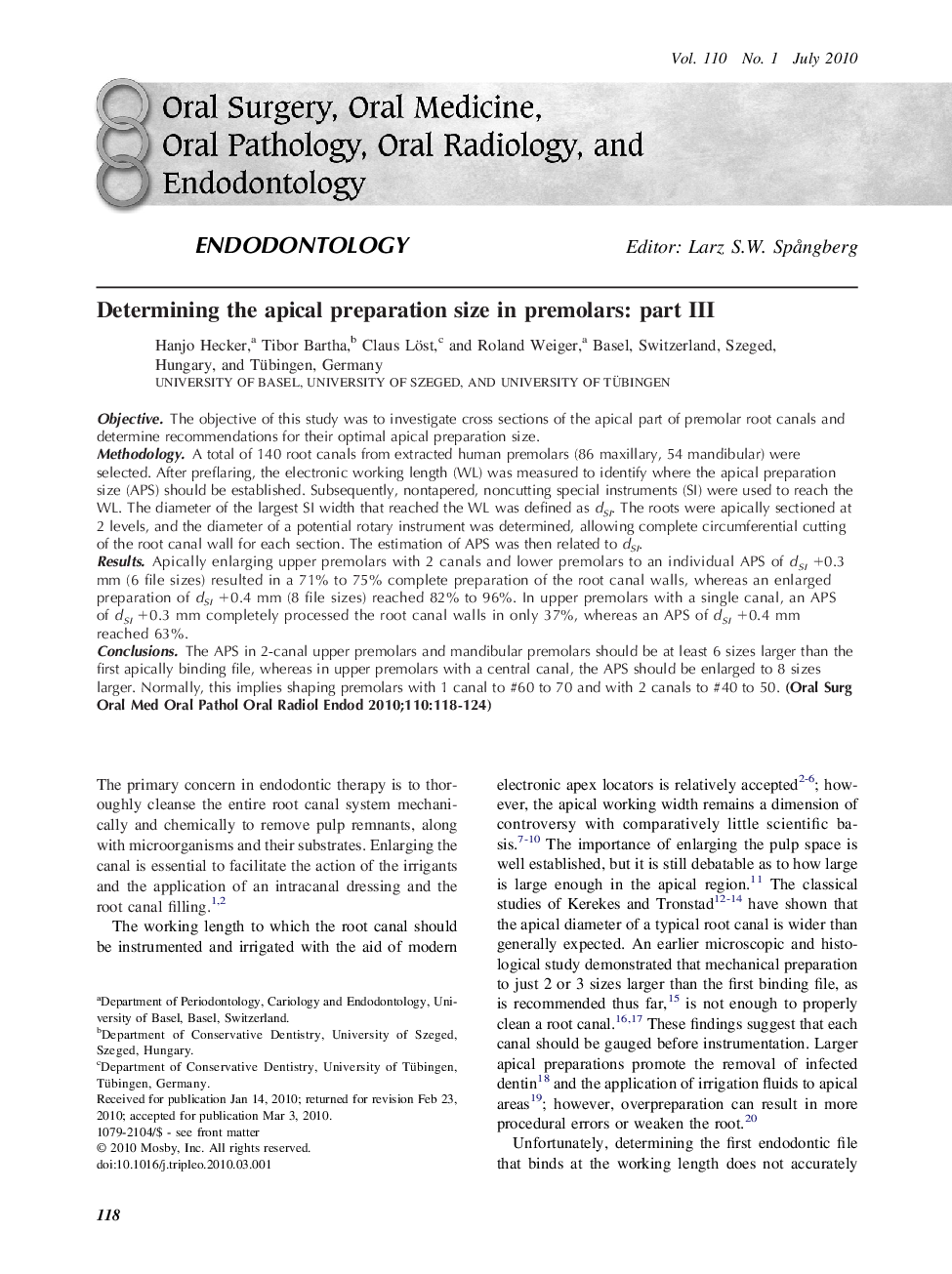| Article ID | Journal | Published Year | Pages | File Type |
|---|---|---|---|---|
| 3167561 | Oral Surgery, Oral Medicine, Oral Pathology, Oral Radiology, and Endodontology | 2010 | 7 Pages |
ObjectiveThe objective of this study was to investigate cross sections of the apical part of premolar root canals and determine recommendations for their optimal apical preparation size.MethodologyA total of 140 root canals from extracted human premolars (86 maxillary, 54 mandibular) were selected. After preflaring, the electronic working length (WL) was measured to identify where the apical preparation size (APS) should be established. Subsequently, nontapered, noncutting special instruments (SI) were used to reach the WL. The diameter of the largest SI width that reached the WL was defined as dSI. The roots were apically sectioned at 2 levels, and the diameter of a potential rotary instrument was determined, allowing complete circumferential cutting of the root canal wall for each section. The estimation of APS was then related to dSI.ResultsApically enlarging upper premolars with 2 canals and lower premolars to an individual APS of dSI +0.3 mm (6 file sizes) resulted in a 71% to 75% complete preparation of the root canal walls, whereas an enlarged preparation of dSI +0.4 mm (8 file sizes) reached 82% to 96%. In upper premolars with a single canal, an APS of dSI +0.3 mm completely processed the root canal walls in only 37%, whereas an APS of dSI +0.4 mm reached 63%.ConclusionsThe APS in 2-canal upper premolars and mandibular premolars should be at least 6 sizes larger than the first apically binding file, whereas in upper premolars with a central canal, the APS should be enlarged to 8 sizes larger. Normally, this implies shaping premolars with 1 canal to #60 to 70 and with 2 canals to #40 to 50.
